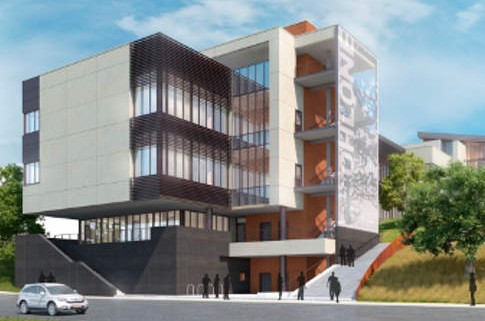Exploring the high demands for higher education facilities: codes and standards
The design process for higher education facilities has its own set of challenges and requirements. Engineers discuss the current trends, challenges, and experiences with college and university facility projects regarding codes and standards.
CSE: Please explain some of the codes, standards, and guidelines you use as a guide. Which codes/standards should engineers be most aware of in their design of such projects?
Foster: ASHRAE is, of course, the most typical. The adoption of the latest energy code is becoming more of a trend across the country, although owners often need to get up to speed with some of the changes to understand the impacts on their project’s design.
Torres: They should be aware of ASHRAE 90.1, ASHRAE 55: Thermal Environmental Conditions for Human Occupancy, ASHRAE 62.1: Ventilation for Acceptable Indoor Air Quality, ASHRAE 188: Legionellosis: Risk Management for Building Water Systems, and North Carolina’s state codes.
Fisher: Most of our college/university work is located in California, which follows the International Building Code. We have to comply with California’s Title 24 Energy Code, which restricts the use of certain inefficient equipment and technologies, such as electric heat, sets maximum energy usage values for lighting, and specifies automatic controls to reduce energy usage. We also have the Green Code, which is roughly based on LEED criteria.
CSE: How do you work with the authority having jurisdiction (AHJ) on college/university projects? What tips can you provide other engineers when consulting with the AHJ?
Torres: University AHJs are an invaluable resource to any design engineer. Their role at the university is to ensure that university guidelines and code requirements are being followed. In my experience, they will take phone calls anytime you want to discuss the interpretation of a code or university guideline. When you reach out to the AHJ, explain any code item in question, present your interpretation of the code, listen to their feedback, confirm the code reference(s) that they refer to, and always be sure to follow up with an email or memorandum documenting the conversation.
Fisher: Community colleges in California fall under the authority of the Division of the State Architect (DSA). As with any governing body, DSA has specific requirements, such as fire alarm and fire protection systems, that cannot be deferred, and full designs must be submitted with the plans for approval. I would recommend teaming up with an experienced firm before submitting your first project to the DSA for approval.
Hickey: Engineers should document the currently required codes by researching the college/university facilities management information website. The specific editions of these codes and standards should be clearly indicated in the basis of design as well as on the plans and specifications, to avoid misinterpretations or questions by the AHJ upon review of the project plans and specifications. In my experience, most AHJs will answer questions posed by design engineers regarding code interpretations.
Foster: Early and ongoing communication with the AHJ is a vital part of the design process and imperative to assure the project is on sound footing to progress through design. Introducing the project early to the AHJ makes them a part of the team. These early discussions, as well as all external AHJ discussions, need to be vetted with the university/college so the flow of information is understood and any political or community issues can be appropriately conveyed. At a minimum, the meetings should identify the codes the project will be designed under as well as any unique measures that the design team may wish the AHJ to entertain. As the project moves into construction, bringing in the AHJ to discuss pre-inspection processes and, specifically, detailed testing procedures is critical to making occupancy a relatively easy process.
Hammelman: One of the most challenging aspects of dealing with an AHJ for college or university projects is identifying the AHJ. It varies from institution to institution and state to state. Private institutions are perhaps the easiest to deal with, in that they are typically responsible to the municipalities in which they reside. Community colleges and state universities often are independent of local jurisdiction, responsible only to whatever state entities might exist (such as state fire marshal, state plumbing inspector, etc.). But each project has its own subtleties; on a recent community college project, we were designing to rework water and sewer utilities and were assured by the college that the township in which they resided did not have the need to permit or inspect the work. The state agency controlling these utilities was supposed to be the only agency responsible. As it turns out, the state entity required that the local inspector perform an inspection in addition to their own, and because of that, the local municipality required that we obtain a permit for the work so they could execute the inspection. In the end, doing the homework upfront will help you to understand the intricacies of jurisdictions.
CSE: NFPA has issued the latest version of NFPA 72: National Fire Alarm and Signaling Code in the 2016 edition. How do you anticipate these changes to impact future projects for college/university buildings?
Fisher: The big change is in fire alarms, which recently has been the requirement for voice annunciation and mass notification. We expect this to be refined in the future as the systems become more mature/sophisticated.
Foster: As we see our clients starting to require mass-notification capabilities with their fire alarm systems, NFPA 72: National Fire Alarm and Signaling Code has provided some flexibility in the type of speakers allowed for acoustically challenging spaces. Where standard listed fire alarm audible devices are not sufficient for addressing intelligibility requirements, NFPA 72 permits nonlisted loudspeakers. This may prove helpful to designers for such areas as theaters, fieldhouses, and other extremely large-volume higher education spaces.
http://www.csemag.com/single-article/exploring-the-high-demands-for-higher-education-facilities-codes-and-standards/e76fe08784364e9bf9c9645483633bd0.html




Leave a Reply
Want to join the discussion?Feel free to contribute!